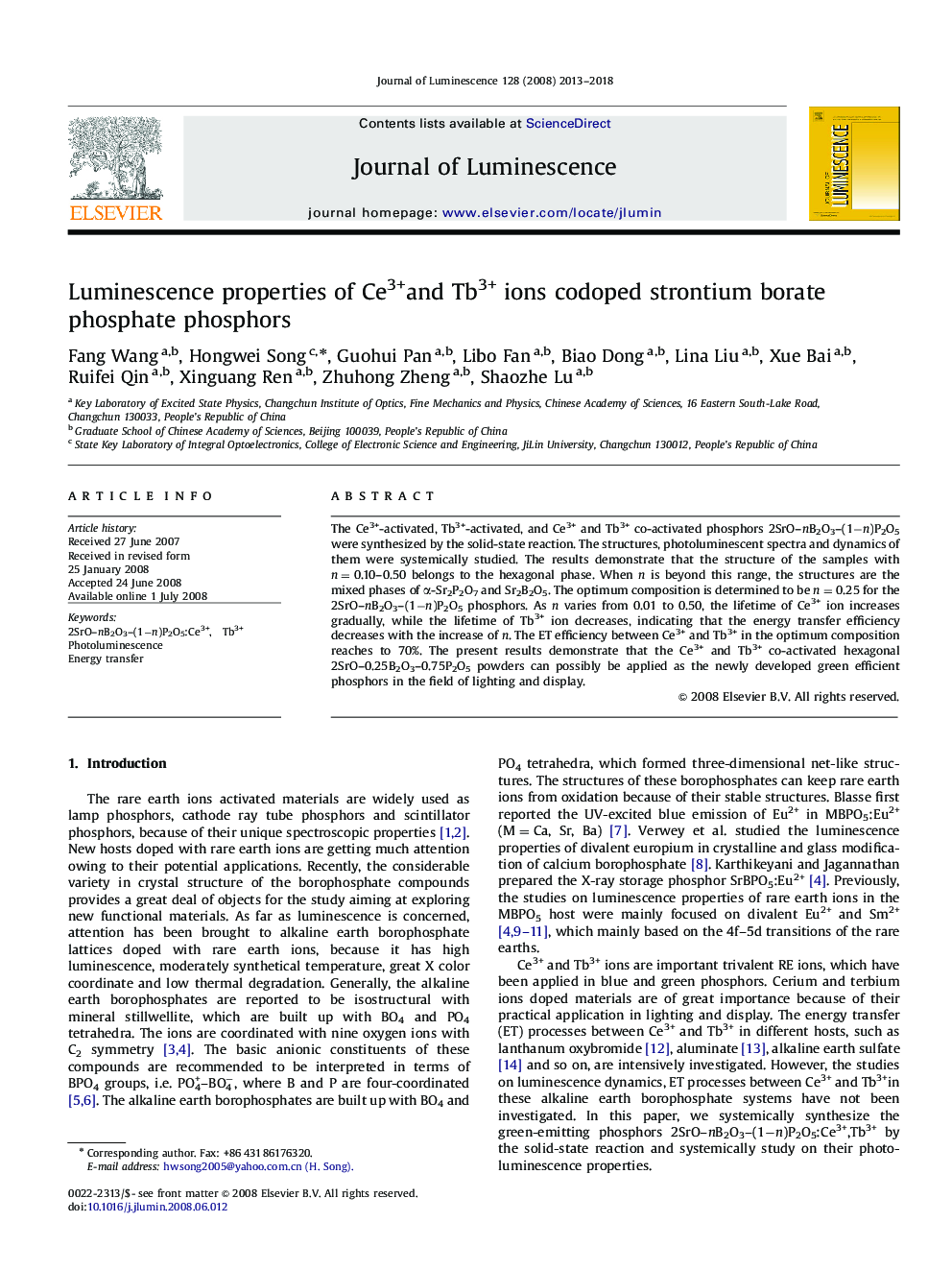| Article ID | Journal | Published Year | Pages | File Type |
|---|---|---|---|---|
| 5403621 | Journal of Luminescence | 2018 | 6 Pages |
Abstract
The Ce3+-activated, Tb3+-activated, and Ce3+ and Tb3+ co-activated phosphors 2SrO-nB2O3-(1ân)P2O5 were synthesized by the solid-state reaction. The structures, photoluminescent spectra and dynamics of them were systemically studied. The results demonstrate that the structure of the samples with n=0.10-0.50 belongs to the hexagonal phase. When n is beyond this range, the structures are the mixed phases of α-Sr2P2O7 and Sr2B2O5. The optimum composition is determined to be n=0.25 for the 2SrO-nB2O3-(1ân)P2O5 phosphors. As n varies from 0.01 to 0.50, the lifetime of Ce3+ ion increases gradually, while the lifetime of Tb3+ ion decreases, indicating that the energy transfer efficiency decreases with the increase of n. The ET efficiency between Ce3+ and Tb3+ in the optimum composition reaches to 70%. The present results demonstrate that the Ce3+ and Tb3+ co-activated hexagonal 2SrO-0.25B2O3-0.75P2O5 powders can possibly be applied as the newly developed green efficient phosphors in the field of lighting and display.
Keywords
Related Topics
Physical Sciences and Engineering
Chemistry
Physical and Theoretical Chemistry
Authors
Fang Wang, Hongwei Song, Guohui Pan, Libo Fan, Biao Dong, Lina Liu, Xue Bai, Ruifei Qin, Xinguang Ren, Zhuhong Zheng, Shaozhe Lu,
